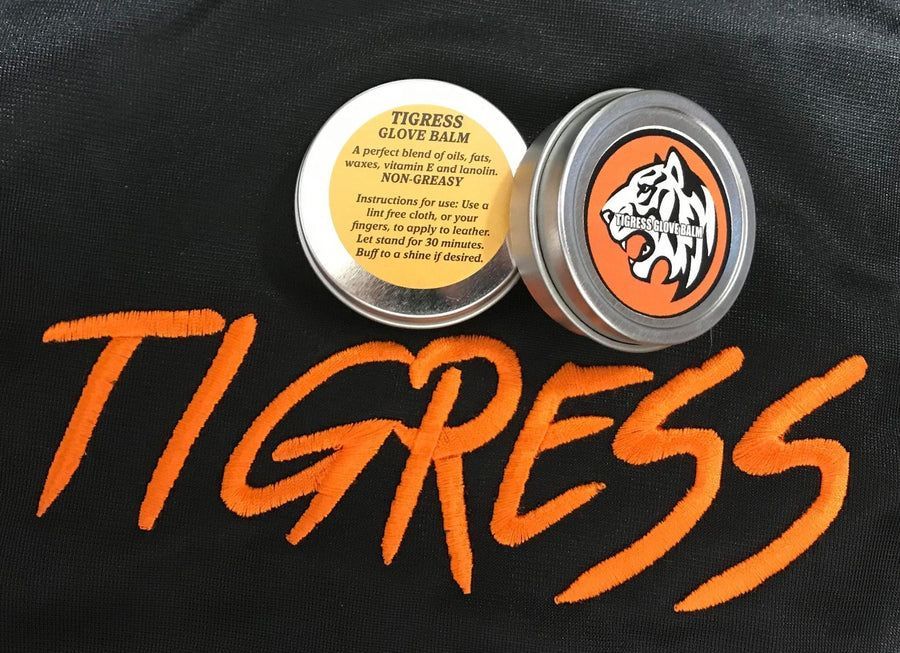SOFTBALL NUTRITION: FUELING YOUR BODY FOR PEAK PERFORMANCE
Think of softball as baseball's faster, more compact cousin. Played on a smaller field with a larger ball, it shares many similarities but delivers a unique intensity and pace. Softball demands a blend of strength, speed, and explosive power, keeping players on their toes. Exceptional focus, lightning-fast reflexes, and the ability to make split-second decisions are paramount, especially when facing pitches that can reach speeds of over 70 mph!
A softball team fields 9 players who both bat and field positions, with specialized pitchers delivering the ball in a unique underhand motion. Unlike baseball, games have a set duration of 7 innings, usually lasting approximately 1-2 hours. The intensity fluctuates, with bursts of high-energy action followed by periods of standing or waiting in the dugout.
Softball training is physically demanding. Players focus on developing strength with weight training, increasing speed and fitness with sprints, and honing their skills with targeted drills. Practice sessions can easily stretch to 2-3 hours. Fueling the body with the right food and nutrients is vital to maximize training effectiveness and speed recovery.
Every athlete has different nutritional needs based on training volume, goals, body composition, and age for younger players. Having ready-to-eat post-workout or post-game snacks is better than relying on venue availability. Softball players often face the challenge of fitting healthy eating into busy schedules, leading to skipping meals or making less-than-ideal food choices, hindering performance and recovery.
What is a Good Diet for Softball Players?
A successful softball player doesn't just train hard; they eat strategically. A well-rounded, balanced diet is essential, but fine-tuning your food intake to match the training demands is just as important. This means adjusting your energy and carbohydrate intake based on whether it's a high-intensity day or a lighter practice.
The Building Blocks: Nutrient-Rich Foods
Focus on fueling your body with high-quality ingredients. Prioritize whole grains, fruits, vegetables, lean protein like chicken or fish, low-fat dairy, nuts, seeds, and legumes. These provide the vitamins, minerals, and energy you need for peak performance. Minimize processed foods, sugary snacks, and fried treats; they offer little nutritional value and can hinder your progress.
Timing is Everything
How and when you eat plays a significant role! Spread meals and snacks throughout the day for better nutrient absorption and stable energy levels. This can also help keep hunger in check between training sessions.
Hydration: The Unsung Hero of Softball
Dehydration does more than just make you thirsty; it impairs your strength, skill execution, and ability to make quick decisions on the field. Proactively maintaining proper hydration is crucial for softball players during training and games.
Risk Factors for Dehydration
Pay extra attention to your fluid intake in the following situations, as they increase dehydration risks:
- Hot weather conditions
- Multiple training sessions or matches within a single day
- Beginning a training session or game while already dehydrated
Staying Ahead of the Game
Everyone's fluid needs differ depending on sweat rate, activity intensity, and weather. As a rule, start every session well-hydrated and consistently replace lost fluids throughout your practice.
Additional Notes
Consult a sports dietitian or nutritionist for personalized guidance, especially if you have specific performance goals or health considerations.
Experiment to find pre- and post-practice snacks that work best for you. Options might include fruit with yogurt, a whole grain wrap with lean protein, or a sports drink with a handful of trail mix.
Don't neglect rest days! Even when you're not training, a balanced diet supports your body's recovery and prepares you for the next challenge.

Pregame Fuel: Setting Yourself Up for Success
Imagine your body like a high-performance car – you wouldn't run it on an empty tank! Softball players must approach every game with their energy stores topped up and hydration levels on point. Good game-day nutrition starts days before, with consistently healthy eating habits throughout the week.
The Ideal Pregame Meal
Everyone processes food differently, but most players benefit from a pregame meal 3-4 hours before the first pitch. Focus on a balance of carbohydrates for readily available energy and fluids for hydration.
- Carb Power:
Think whole-grain toast, oatmeal, fruit, or a moderate portion of pasta. These fuel your muscles and brain's need for quick bursts of power and focus.
- Hydration is Key: Don't forget to drink water or other hydrating fluids with your meal.
The Pregame Snack
Many players find a minor snack helpful around 1-2 hours before the game. This should be primarily carbohydrate-based but with minimal fat and fiber for easy digestion. Good options include:
- A piece of fruit
- Crackers with a small amount of cheese
- A sports bar (look for ones with primarily real-food ingredients)
When Nerves Strike
If pregame jitters make solid food unappealing, don't force it! Liquid options can be easier to stomach. A fruit smoothie or flavored milk provides both carbohydrates and protein for sustained energy.
The Pregame Food Playbook
3-4 Hours Before the Game (Heartier Meals):
- Whole wheat pasta with marinara sauce and lean ground turkey
- Chicken stir-fry with brown rice and vegetables
- Oatmeal with berries, nuts, and a drizzle of honey
- Turkey sandwich on whole-grain bread with a side salad
- Low-fat Greek yogurt with granola and fruit
1-2 Hours Before the Game (Lighter Snacks):
- Banana and a handful of almonds
- A small bowl of cereal with milk
- Rice cakes with nut butter and sliced fruit
- Whole wheat toast with a small amount of avocado or hummus
- Sports bar (choose ones with minimal added sugars)
If Nerves Make Solids Uncomfortable:
- Fruit smoothie with protein powder
- Flavored milk (regular or chocolate)
- Sports drink and a piece of fruit
Additional Tips:
- Listen to your body: Every player has different food preferences and tolerances. Find what works best for you through experimentation!
- Hydrate consistently: Drinking daily water is as crucial as the pregame meal.
- Game day is not for drastic changes: Stick to familiar foods you know and agree with.
Fueling During the Game
Most softball games are short enough that you won't need to eat during play, especially if you started the match well-fueled. However, light snacks might be helpful in the following situations:
- High-Intensity Roles: Catchers or players who are constantly on the move might benefit from snacks to keep their blood sugar stable and their brains sharp.
- Long Games: Tournaments or extended matches sometimes require a little in-game energy boost.
Hydration is Non-Negotiable
Every player should keep a water bottle handy for frequent sips between innings. While water is usually enough, sports drinks can be helpful for longer games or when players are incredibly active, and replacing lost electrolytes is crucial.
In-Game Snacking: When to Snack & What to Choose
Most softball games are short enough that extra fueling during play isn't strictly necessary, especially if you started the game with an excellent pregame meal. However, there are specific situations where in-game snacks can be beneficial:
- Long Games or Tournaments: If matches stretch over several hours or you have several games in a day, light snacks can boost energy to maintain focus and prevent performance declines.
- High-Intensity Positions: Catchers, infielders, or players who are very active may benefit from topping up their energy stores more frequently.
- Managing Hunger: Some athletes get hungry during games, and eating a small snack can help them focus on the task.
The Best Choices
- Easy-to-Digest Carbs: These provide quick energy for your muscles and brain. Think fruits (a banana, grapes, and berries), pretzels, graham crackers, or a small serving of sports chews/gels.
- Hydration is Key: Always keep your water bottle on hand and sip frequently between innings. In hot weather or very long games, a sports drink might be helpful to replace electrolytes lost through sweat.
- Small Portions: Huge snacks mid-game will divert blood flow to digestion, leaving you feeling sluggish. Opt for 1-2 bite snacks you can consume quickly.
What to Avoid
- High-Fat Foods: Nuts, seeds, and greasy snacks take longer to digest and can upset your stomach during play.
- High-Fiber Foods: While fiber is great for everyday health, it can cause digestive discomfort for some players during a game.
- Sugary Treats: Candy, cookies, etc., provide a quick burst of energy followed by a crash, which is detrimental to performance.
Additional Considerations
- Experiment in Practice: Find what works best for you so there are no surprises on game day.
- Consider the Conditions: Frozen grapes or chilled watermelon chunks offer hydration and a cooling energy boost on scorching hot days.
Post-Game Power-Up: The Key to Consistent Performance
Recovery doesn't begin when you hang up your cleats – it's about what you do immediately after the game to help your muscles repair and prepare for the next challenge. This is even more critical during tournaments with multiple games close together.
Focus on these recovery nutrition goals:
- Energy Replenishment: Restock your muscle glycogen (carbohydrate stores) with choices like whole-grain bread, yogurt with fruit, or a balanced meal.
- Muscle Repair: Include protein for its muscle-building properties. Good options include lean meat, grilled chicken, eggs, dairy, beans and lentils.
- Rehydration: Refill those lost fluids with water, sports drinks (if they played a long, intense game), or hydrating foods like fruits and vegetables.
Timing is essential for optimal recovery! Aim for a recovery snack or meal as soon as possible after finishing play, especially if you're training or competing again the next day.
Other Articles


Subscribe to our
Newsletter
Our newsletter is focused on bringing you the latest in news & tips.
Join the Newsletter
Thank you for subscribing.
Please try again later
All Rights Reserved | Tigress Gloves
Website by SPECK DESIGNS
All Rights Reserved | Tigress Gloves
Website by SPECK DESIGNS




